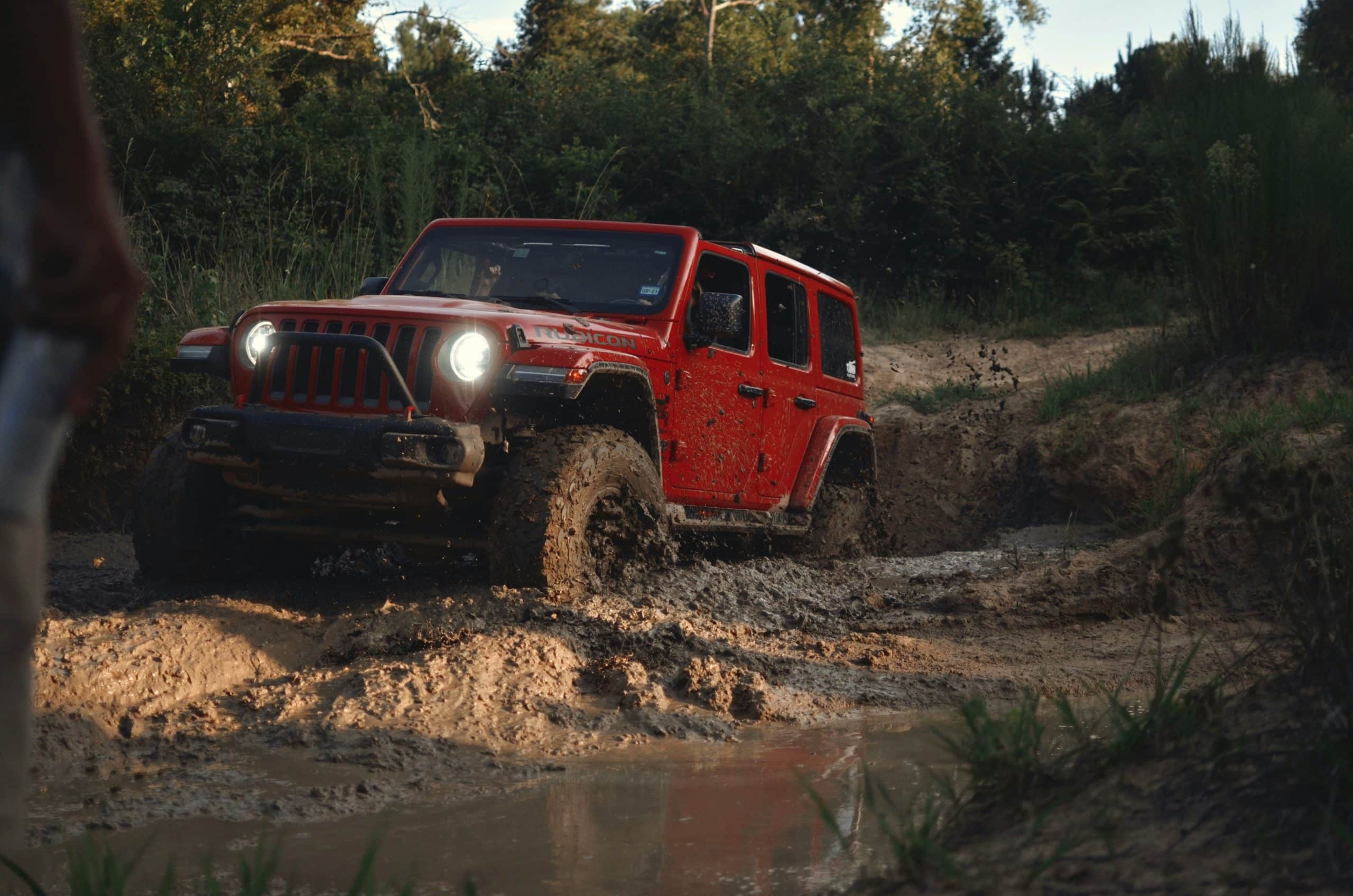Can You Improve Your Vehicle’s Ground Clearance and Off-Road Capability with a Lift Kit?

Off-roading has become a popular pastime for many of you, offering the chance to explore the great outdoors while testing the limits of your vehicle. However, not all vehicles are equipped to handle the rough and rugged terrains you may encounter off the beaten path. The good news is, there’s a solution available to enhance your vehicle’s off-road functionality: lift kits. But can these kits truly improve your vehicle’s ground clearance and off-road capability? Let’s delve deeper into the world of lift kits and their potential benefits.
Understanding Lift Kits
Before we delve into the possibilities that lift kits offer, it’s essential to understand what they are. A lift kit is a vehicle modification that raises the vehicle’s body or suspension, providing additional clearance between the vehicle’s chassis and the ground. This modification can lead to improved off-road performance, among other benefits.
Also to discover : What Are the Benefits of Upgrading to High-Performance Synthetic Differential Fluid?
Lift kits come in two broad categories: body lift kits and suspension lift kits. Body lift kits elevate the vehicle’s body higher off the frame using blocks or spacers. This type of kit doesn’t affect the vehicle’s suspension or performance. On the other hand, suspension lift kits involve replacing the vehicle’s front and rear shocks and leaf springs, effectively increasing both the height and the ground clearance. This alteration directly affects the vehicle’s performance, particularly during off-road adventures.
Advantages of Improving Ground Clearance
By increasing your vehicle’s ground clearance, a lift kit can provide several distinct advantages, particularly when off-roading. Higher ground clearance means you have more space between the underside of your vehicle and the ground. This extra space can be particularly beneficial when navigating rocky terrains, steep inclines, and deep water crossings.
Also read : How to Optimize Your Vehicle’s Fuel Delivery with High-Performance Injectors and Rails?
Ground clearance is crucial for off-roading vehicles. The higher the clearance, the easier it is to drive over obstacles without causing damage to the vehicle’s underside. This protection against potential damage is vital, particularly for those of you often venturing off the beaten path.
Additionally, higher ground clearance often leads to improved visibility. With a lifted vehicle, drivers have a better view of the road or track ahead, enabling them to spot potential hazards more easily.
Enhancing Off-Road Performance with a Lift Kit
While the benefits of improved ground clearance are apparent, a lift kit’s ability to enhance off-road performance is also noteworthy. A lift kit does more than just raise your vehicle off the ground. It also modifies the vehicle’s suspension system, which is integral to the vehicle’s performance on rough terrain.
By installing a lift kit, the vehicle’s suspension becomes more flexible and adaptable, allowing the vehicle to absorb the impact of bumps and dips more effectively. This adaptability results in a smoother and more controlled ride, even on challenging terrains.
Moreover, a lift kit can improve wheel articulation. This means the wheels are able to move independently of each other, making it easier to maintain contact with the ground on uneven surfaces. This can enhance traction and stability, leading to a safer and more enjoyable off-roading experience.
Considerations Before Installing a Lift Kit
While lift kits offer numerous advantages, they are not without their drawbacks. Therefore, it’s essential to consider a few factors before deciding to install one.
Firstly, installing a lift kit can alter your vehicle’s center of gravity, making it more susceptible to tipping over during sharp turns or on uneven terrains.
Secondly, lifting your vehicle may affect its aerodynamics and fuel efficiency. The increased wind resistance due to the vehicle’s higher profile can lead to higher fuel consumption.
Finally, a lift kit can put additional strain on the vehicle’s suspension and drivetrain components. This can result in increased wear and tear, particularly if you frequently drive off-road.
Making the Right Choice
Lift kits are a popular modification among off-roading enthusiasts. They provide a substantial increase in ground clearance, potentially improving your vehicle’s off-road capability. However, it’s important to weigh the benefits against the potential drawbacks before making your decision.
In conclusion, a lift kit can indeed enhance your vehicle’s ground clearance and off-road capability while offering other benefits such as improved visibility and protection against undercarriage damage. However, it’s essential to consider the potential impact on vehicle stability, fuel efficiency, and maintenance requirements before making this modification.
The Installation Process
Before you dive into enhancing your vehicle with a lift kit, you must understand the installation process involved. Installing a lift kit is not something to be taken lightly. A successful installation requires a solid understanding of your vehicle’s suspension system and a good set of tools.
The installation process varies depending on the type of lift kit you choose. Body lift kits are generally simpler to install, as they only involve placing spacers between the vehicle’s body and frame. However, despite the perceived simplicity, this process can be time-consuming and requires attention to detail. A misstep could lead to an unbalanced vehicle or, in the worst-case scenario, damage to the vehicle’s frame.
On the other hand, suspension lift kits require a more complex installation process, often involving the replacement or modification of several components such as struts, shocks, and control arms. This process requires mechanical knowledge and precision, as an incorrect installation can lead to serious performance issues or even safety risks.
Regardless of the type, installing a lift kit usually requires several hours or even a full day, depending on the complexity of the kit and your level of experience. It’s advisable to seek professional help if you’re unsure about any step of the process, as mistakes can be costly and potentially dangerous.
Legal and Insurance Considerations
When considering a lift kit for your vehicle, you also need to take into account the legal and insurance implications. Different jurisdictions have different regulations regarding vehicle modifications, and lift kits are no exception. In some areas, there might be restrictions on how much you can raise your vehicle’s height, and failing to comply with these regulations could result in penalties or even the revocation of your vehicle’s registration.
Furthermore, some insurance companies may view modifications like lift kits as a risk, which could potentially raise your insurance premiums. In some cases, your insurance provider may even refuse to cover your vehicle if they consider the modifications to have made it unsafe.
Therefore, it’s crucial to check your local laws and consult with your insurance provider before installing a lift kit. It’s important to note that these legal and insurance considerations should not be seen as deterrents but rather as necessary steps in making an informed decision.
Conclusion
Overall, lift kits are a viable solution for enhancing your vehicle’s ground clearance and off-road capability. The potential benefits such as improved visibility, protection against undercarriage damage, and enhanced performance on rough terrains make them a popular choice among off-road enthusiasts.
However, a lift kit is not a one-size-fits-all solution. The right choice depends on multiple factors including your vehicle’s specifications, your off-roading needs, and your willingness to handle potential drawbacks such as altered stability, increased maintenance requirements, and decreased fuel efficiency.
Moreover, the installation process can be complex and labor-intensive, requiring mechanical expertise and precision. Legal and insurance implications also need careful consideration, as failing to do so could lead to unexpected troubles.
In conclusion, the decision to install a lift kit should be made after thorough research and consideration. It’s a decision that balances the thrill of enhanced off-road performance against the need for due diligence and caution. As long as you’re prepared for the challenges and responsibilities that come with it, a lift kit can be a worthwhile addition to your off-roading adventures.
